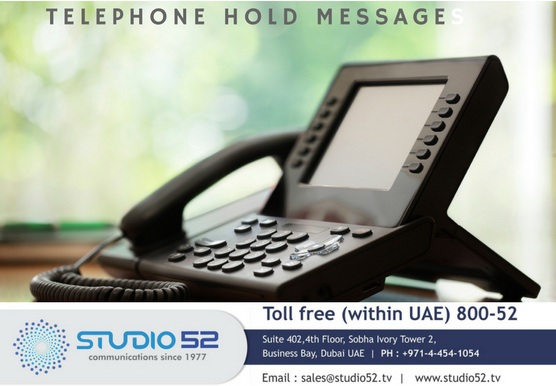On-Hold Messaging is a crucial communication tool for any business, even one that is not as popular as it should be. The fact of the matter is that on hold messaging is a necessary customer experience and marketing tool that can positively impact a business and drive revenue.
There are a lot of advantages to using it, such as:
- Improves customer experience and satisfaction.
- Helps process calls faster once they connect.
- Increases caller retention.
- Sets a professional tone before the call connects.
- Decreases the strain on human resources.
Now, you need to implement it right if you want to really take advantage of it. Let us help you get started with On-Hold Messages.
FIND YOUR MAIN MESSAGES
This is always the first step when creating On-Hold Messages for your organization. This isn’t the time to think about scripts, production, the voice, music.
Keep it simple and think about the benefits that on-hold messaging will bring to your business. Brainstorm between the people involved in the project for ways that you can use your message for the benefit of the company.
The following questions are to help you get started, but every business should make different questions based on what they want and need.
- Why do customers call your business?
- What information can you provide to them immediately so they don’t have to wait for an attendant?
- Are customers regularly requesting information (such as directions, hours, etc.) that you can provide through your hold message?
- What other properties or resources are available to provide information? Can you direct callers to a website that will provide additional information?
- Do you have a new product or service you would like to promote? Are you running a special promotion that would interest your callers?
- Do you have products or services that customers are often unaware of, but interested in once they learn about them?
With the answers you get you are going to build a caller profile that should include important information like the average age of the caller, how long do they stay on hold and a list of the most frequently asked questions.
SCRIPT
For your script you always need to keep the callers in mind, this message is for them. You need to know who is most likely to call your business and what’s the best way to approach them.
After you’ve identified your main messages and made a caller profile, it’s time to write your script. Write the way you talk, don’t overthink it. This is your opportunity to demonstrate professionalism and communicate directly to your caller. You should provide as many sections as required, depending on how long you expect the average caller to be on hold. Usually 6-10 sections of dialogue is sufficient.
Once you have completed your draft, we recommend triple checking it. After all, once recorded, it will be with you for months if not years.
- Re-read it more than once
- Read it out loud
- Read it to your colleagues and get them to read it back to you
THE PRODUCTION PLAN
Producing on-hold messages that are appealing to your callers is essential. By combining a well-written script and the right voice over talent, your business will have a powerful program that keeps callers captivated.
Assign the voice for your message. Decide who in your company will speak the message or if you need to hire voice talent.
Plan for the future. As you finalize your messaging strategy, don’t forget to think about future management. Create a plan that identifies when and who will update your scripts so that your messages are always timely and relevant.
And Start Recording!






